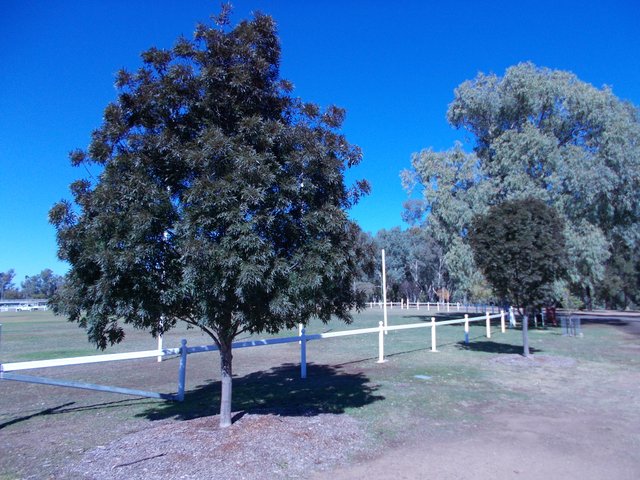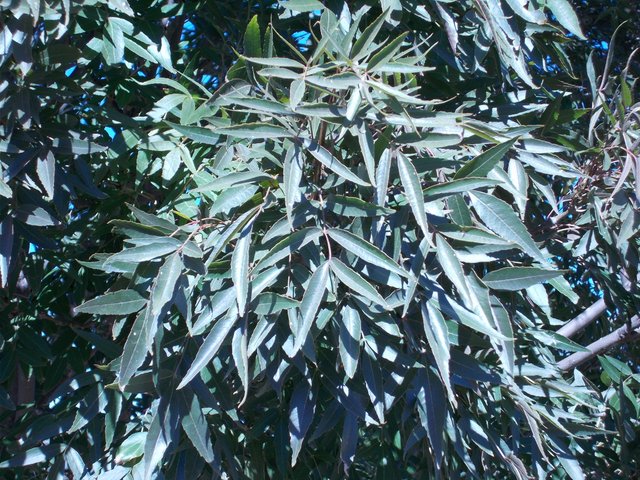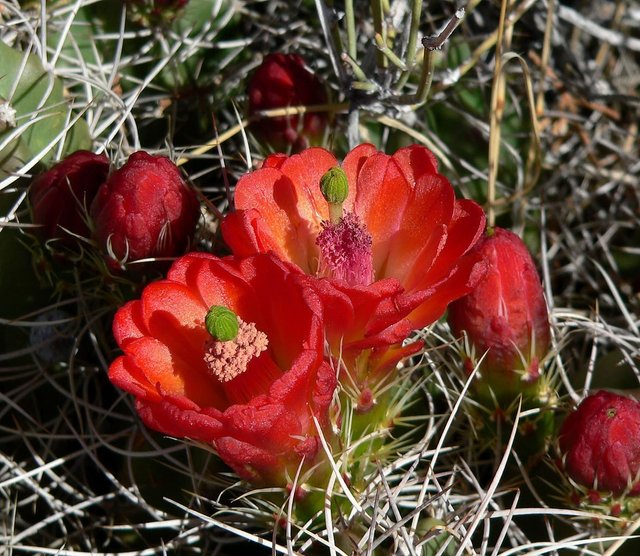Claret Ash - for those with a big Garden
The Claret Ash , botanical name; Fraxinus oxycarpa "raywoodii" is a natural variation of the Ash tree discovered as a seedling. This is a large deciduous tree growing more than 15 metres in height and 10 metres wide. With dark coloured leaves, this tree will add to colour contrast in the garden, and the foliage is even more striking in cooler climates before it sheds it's leaves. You can also grow plenty of other plants underneath this tree, as they will get sunlight in winter when the tree is dormant. Claret Ash is frost tolerant once established and it's deep root system will sustain the tree through dry periods. It is best suited for temperate and cooler climates . I took these photos in Narrabri ( Northern NSW, Australia ).

A broadly round-headed tree with narrow leaves which give a billowy, soft-focus texture. The Claret Ash lives up to its name in autumn, when this goblet-shaped tree turns a rich claret red. A quick growing, very vigorous, easy to grow tree which brings immediate structure and beauty to an open space. Roots are generally deep and fairly unproblematic, making this tree well suited for planting positions near paving.
http://www.majestictrees.co.uk/tree-shrub/232-fraxinus-angustifolia-raywood
Silly Sausage Award ! Congrats, you chose great pics and made a great description of the tree.
Really looking wonderful and amazing plant and colourful too.Deciduous vigorous spreading tree with a symmetrical crown (10m x 7m). Select form of F.oxycarpa developed in Australia from South Eastern Europe and Asia Minor. Lacy pinnate compound leaves occurring in whorls along the branches turning purple red in autumn. Useful as a specimen or shade tree. Frost tolerant. *Known to damage underground services, do not plant within 6 metres of any wastewater pipe.
.jpeg)
You can also grow plenty of other plants underneath this tree, as they will get sunlight in winter when the tree is dormant. Claret Ash is frost tolerant once established and it's deep root system will sustain the tree through dry periods. It is best suited for temperate and cooler climates . I took these photos in Narrabri ( Northern NSW, Australia ).
.jpeg)
The tree grows to around 15–20 m (49–66 ft) and has dark green leaves that turn to a dark claret red in the autumn. The bark of the tree is notably smoother than the Caucasian Ash, which is quite apparent on those trees grafted on Caucasian Ash stock. In Australia and the United States a decline or dieback in some older trees has been observed which has been attributed to a combination of environmental stress and the presence of the fungus .
Collected from net.

Thanks to share and known from you another amazing plant.
Fav, comment Award ! Congrats, for the great pics and description of the tree.
Aptly named, the beautiful deep claret-red to plum-purple autumn foliage makes the Claret Ash one of the most striking of all the ash trees. Ideal in large or moderate sized gardens that require a fast growing shade tree that produces spectacular autumn colour.
The Claret Ash Tree is adaptable to a wide range of soil and site conditions but performs best in moist well drained soils in full sun. Quite drought tolerant. Not suited to very wet sites.
.jpeg)
.jpeg)
.jpeg)
.jpeg)
Yes, you won the Fav, comment award, shared with one other. Great pics and description.
@ctrl-alt-nwo,
Yeah it's clearly showing that tree is in Ash color! I saw red color ones before, but never seen this type of tree! Amazing photography and the description! Thank you for sharing this wonderful nature details!
Cheers~
Claret Ash
The Claret ash or Raywood ash is a cultivar of ash tree, a seedling variant of the Caucasian ash (Fraxinus angustifolia subsp. oxycarpa). The original seedling was discovered near a group of assorted ash trees in Sewell's nursery in the Mount Lofty Ranges in South Australia about 1910, and later grown at the nearby property Raywood (former home of the Downer family). The tree was introduced to Britain in 1928 and to North America in 1956, although it did not become widely available there until 1979.
The tree grows to around 15–20 m (49–66 ft) and has dark green leaves that turn to a dark claret red in the autumn. The bark of the tree is notably smoother than the Caucasian Ash, which is quite apparent on those trees grafted on Caucasian Ash stock. In Australia and the United States a decline or dieback in some older trees has been observed which has been attributed to a combination of environmental stress and the presence of the fungus Botryosphaeria.
https://en.m.wikipedia.org/wiki/Claret_Ash
This is very beautiful garden and beautiful photography. .it is very looking for this Claret Ash for garden.



Thanks @ctrl-alt-nwo
Have a great day
A beautiful plant and Originated from South Australia, this develops an open canopy. The fast grow Claret Ash has small narrow leaves which are deep green through out summer. These leaves turn an intense claret colour during autumn. Popular for it's shade a colour change.
Height: 15 metres
Width: 10 metres
Ideal in larger gardens that require a fast growing shade tree that produces a brilliant autumn leaf colour change.
https://www.arborwest.com.au/perth/Trees/Deciduous/claretash/Claret-Ash
Thank you @ctrl-alt-nwo
Oh yeah @ctrl-alt-nwo, Claret Ash medium-large deciduous tree, with an upright growth habit that develops into an open-rounded shape. The leaves are narrow and pinnate and dark green. Autumn colour turns to a lighter yellow-green followed by deep claret colours. Uses are for a specimen tree in large gardens, parks or street scapes. Widely used as street or feature trees.
Height: 12m
Width: 6m
Rate of growth: Fast
Foliage:
Narrow pinnate and dark green. Autumn colour turns to a lighter yello-green followed by deep claret.
http://ellenbytreefarm.com/products/fraxinus-raywoodii-claret-ash
Claret Ash
Claret Ash, Fraxinus oxycarpa Raywood is a popular ornamental tree widely planted in Canberra for its exquisite red autumn foliage. Many trees are today exhibiting crown dieback which takes several seasons to become apparent and eventually ends in tree death. The cause(s) of this dieback are unknown. They could be caused by an unknown pathogen or be related to site conditions.
This study aims to provide data on the speed with which the dieback advances through tree crowns, and to identify any links between the dieback and other environmental factors such as tree age, the level of tree maintenance, inherent site parameters, and site disturbance.
The project focuses on dieback in Claret Ash street trees in four suburbs, Ainslie (established in 1944), Narrabundah (est. in 1947), Weetangera (est. 1970) and Gowrie (est.1981).
DISMUT (decision information system for the management of urban trees), 1997-2000 showed dieback in these suburbs varied from 5% and 11%. The present survey in 2002 showed 29% and 54% respectively indicating that dieback in these suburbs is rapidly increasing and is therefore a major problem in Canberra’s urban forest.
The average diameter at breast height of trees varies across the four suburbs. When looking at the effect of dbh on dieback it was found that in the 0-5cm dbh class, healthy trees exceed trees with dieback. For those trees in the 6-14cm dbh class, trees with dieback are generally equal or exceed healthy trees.
A statistical analysis of the data collected from the survey suggests that large diameter trees are more likely to suffer from dieback than small diameter trees. Trees are also more likely to suffer from dieback if their roots are not exposed. Another interesting result was that trees growing on slopes are more likely to suffer from dieback than those trees growing on level ground.
As the second part of this project, the duration and severity of dieback on tree growth will be examined by studying the annual growth rings.
https://treenet.org/resources/dieback-in-claret-ash/
CLARET ASH
Bare Rooted
Fraxinus raywood
Aptly named, the beautiful deep claret-red to plum-purple autumn foliage makes the Claret Ash one of the most striking of all the ash trees. Ideal in large or moderate sized gardens that require a fast growing shade tree that produces spectacular autumn colour.
The Claret Ash Tree is adaptable to a wide range of soil and site conditions but performs best in moist well drained soils in full sun. Quite drought tolerant. Not suited to very wet sites.
Supplied as a bare rooted tree.
https://www.gardenexpress.com.au/product/claret-ash/